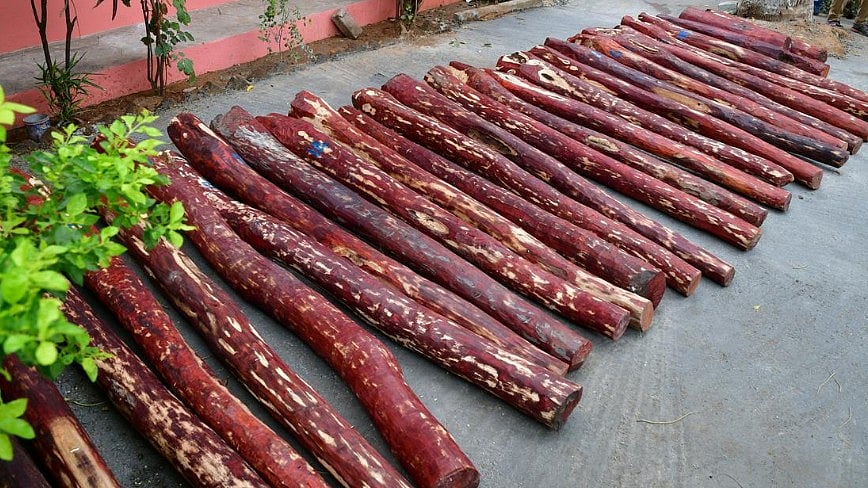
Representative image of Andhra Pradesh's red sanders.
Credit: Forum IAS
Even as concerns over the illegal felling and smuggling of red sanders persist, Andhra Pradesh has stepped up long-term conservation measures for the species. A year after India’s removal from the Review of Significant Trade (RST) process under the Convention on International Trade in Endangered Species (CITES), the state is now working to position its red sanders conservation as a model for balancing ecological security with community livelihoods.
CITES took India out of the RST process for red sanders in November 2023. India had been under heightened international monitoring since 2004 because of widespread illegal logging and export of the high-value timber. The delisting came after India met the CITES requirements, including by amending the Wildlife Protection Act in 2022 to fully integrate the norms set by the global body into domestic law. This opened the door for legal overseas trade, enabling red sanders farmers and plantation growers to legitimately access global markets. This shift is expected to incentivise farmers to expand the cultivation of red sanders, also known as ruby wood, thereby increasing tree cover and reducing pressure on wild populations.
The Andhra Pradesh State Biodiversity Board (APSBB) is working with universities, research institutes, and community groups and undertaking a series of ecological studies aimed at restoring the population diversity of red sanders across Kadapa, Chittoor, Kurnool, Prakasam, and Nellore districts.
“The APSBB, in collaboration with Yogi Vemana University, Kadapa, has launched ecological studies and field programmes focusing on ex-situ conservation, macro-propagation, and assessments of population structure and mycorrhizal associations of red sanders and associated tree species in the dry deciduous forests of the Eastern Ghats,” APSBB chairman Neelayapalem Vijay Kumar told DH. “Scientists will collect seeds from elite trees and evaluate regeneration potential by studying seedlings, saplings, and mature trees – information essential for sustainable forest management. These projects aim to create a scientific baseline for restoration, ensuring both genetic diversity and sustainable yield.”
The village-level Biodiversity Management Committees (BMCs) established under the Biological Diversity Act, 2002, maintain People’s Biodiversity Registers and administer benefit-sharing mechanisms for biological resources. In red sanders zones, the BMCs serve as frontline monitors, reporting illegal felling, assisting in regeneration drives, and identifying degraded or suitable areas for plantation expansion. APSBB conducts training sessions for the BMC members, often linking them with universities and NGOs.
In March 2025, the National Biodiversity Authority approved an APSBB proposal to raise one lakh red sanders seedlings at a cost of Rs 2 crore over three years. The first instalment of Rs 82.77 lakh has already been released from the Access and Benefit Sharing (ABS) fund. Under the ABS, 5% of the sale value of cultivated red sanders is collected as a conservation contribution and redistributed among local communities, thereby creating incentives for sustainable harvesting and protection.
The APSBB is also developing collaborations for advanced genetic studies, GIS-based distribution mapping, and digital tracking of timber movement to curb smuggling networks, increase transparency, and authenticate legal trade channels. The National Expert Committee on Red Sanders has been reinstituted in September 2025 and is expected to refine trade norms and benefit-sharing frameworks as private and farmer-led exports grow.